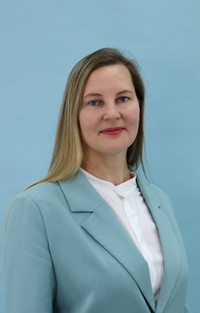Вам может быть интересно:
Архив журнала
Современные подходы к обучению коммуникации детей с особенностями психофизического развития, имеющих нарушения навыков вербального общения
- 964
- Рубрика: МЕЖДУНАРОДНОЕ СОТРУДНИЧЕСТВО
- Файл статьи: PDF
Аннотация: Для значительной части детей с особенностями психофизического развития является характерным существенное недоразвитие устной речи или ее полное отсутствие, что приводит к затруднениям в общении, наличию малодифференцированных и социально неприемлемых коммуникативных сигналов, интерпретация которых возможна в рамках конкретных ситуаций и только при условии тщательного наблюдения со стороны окружающих. Вследствие этого затрудняется социальная адаптация и интеграция детей в общество нормально развивающихся людей, ухудшается качество их жизни. В мировой практике с детьми с особенностями психофизического развития, имеющими нарушения навыков вербального общения, активно используется поддерживающая и альтернативная коммуникация. Следовательно, одной из составляющих профессиональной компетентности современного учителя-дефектолога должно стать овладение знаниями и умениями в данной области. В связи с этим в материалах статьи объективизируется проблема обучения коммуникации детей с особенностями психофизического развития, имеющих нарушения навыков вербального общения, в частности детей с тяжелыми и/или множественными нарушениями развития. Раскрывается значение поддерживающей и альтернативной коммуникации как средства повышения качества жизни детей с тяжелыми и/или множественными нарушениями развития. Описаны подходы к диагностике уровня развития коммуникативного поведения детей. Представлены требования к разработке индивидуальной программы обучения поддерживающей и альтернативной коммуникации. Охарактеризованы принципы формулирования тем занятий (уроков) по обучению поддерживающей и альтернативной коммуникации. Описана примерная структура комбинированных уроков по обучению коммуникации детей с тяжелыми и/или множественными нарушениями развития.
Ключевые слова: поддерживающая коммуникация; альтернативная коммуникация; дети с особенностями психофизического развития; общение детей; речь детей; развитие речи; невербальная коммуникация; средства невербальной коммуникации.
Abstract: Most children with special psychophysical development are characterized by a significant underdevelopment of speech or its complete absence. This leads to difficulties in communication, the presence of undifferentiated and socially unacceptable communicative signals, interpretation of which is possible in specific situations and only if closely observed by the surrounding people. As a result, social adaptation and integration of children into society of typically developing people becomes more difficult, and the quality of life of these children deteriorates. Globally, supportive and alternative communication is widely used with reference to children with special psychophysical development and verbal communication disorders. Consequently, acquisition of knowledge and skills in the field of teaching augmentative and alternative communication skills should become one of the constituents of the professional competence of a modern teacher-defectologist. The article deals with the problem of teaching communication skills to children with special psychophysical development and verbal communication disorders, in particular children with severe and/or multiple developmental disorders. The article defines the importance of supportive and alternative communication as a means of improving the quality of life of children with severe and/or multiple developmental disorders. The article describes the approaches to diagnosing the level of development of communicative behavior of children. It presents the requirements to the design of an individual program of teaching supportive and alternative communication. The article describes the principles of formulating the topics of the classes (lessons) devoted to teaching supportive and alternative communication. The author describes the approximate structure of combined lessons of teaching communication to children with severe and/or multiple developmental disorders.
Key words: supportive communication; alternative communication; children with impairment of psychophysical development; children’s communication; children’s speech; speech development; non-verbal communication; means of non-verbal communication.


